|
|
Post by Don Ricardo on Dec 20, 2016 23:01:14 GMT 10
G'day Furness,
Sounds as if you have found a serial number on the drawbar of your van? That's great. If you can tell us the number we might be able to deduce a date range, at least.
Don Ricardo
|
|
|
|
Post by furness on Dec 21, 2016 17:52:17 GMT 10
Hi Don
The number on the draw bar is 318.
Thanks for helping me out.
Andrew
|
|
|
|
Post by furness on Dec 21, 2016 18:57:33 GMT 10
|
|
|
|
Post by furness on Dec 21, 2016 18:58:19 GMT 10
And a couple more. 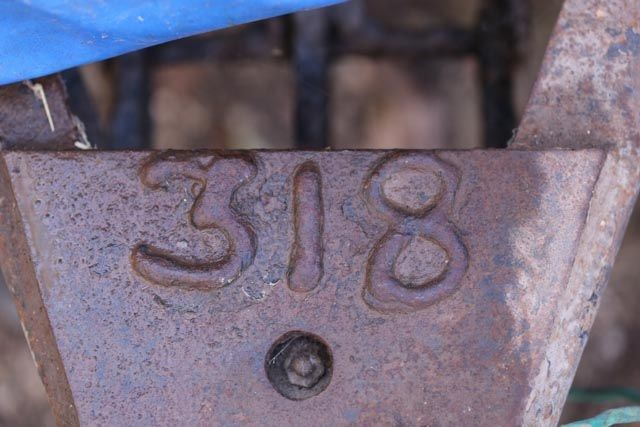 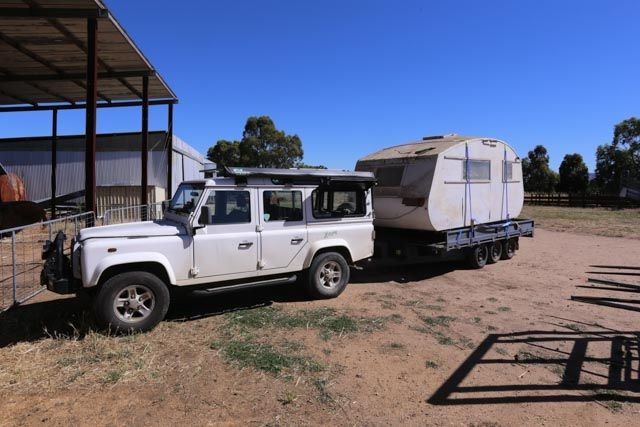 |
|
|
|
Post by Don Ricardo on Dec 22, 2016 10:23:25 GMT 10
Hi Furness, The Furness shown in this post higher up this thread has the serial number 441, and is stated to have been built in 1947. I don't know how accurate that date is - in other words I don't know what evidence the owner had for knowing that his van was built in 1947, and sometimes vintage van owners are waaay out on dates. However, if we take it that he had a receipt or something on which to base the date, then your serial number of 318 is quite a bit earlier, and I'd say at least a year or maybe two before 1947. I doubt if Furness would have produced more than one or two caravans a week in the late 40's, if that, so that could mean that your van was built in, perhaps, 1945 or 1946. The other factor in dating your van is that up until at least 1938, Furness was producing vans with a standard opening door and windows, not sliding ones, like yours. The sliding door/window models might have been introduced just before the beginning of WW II (1939), but I think it is more likely that they were introduced at some point after the war. Lots of caravan manufacturers ceased production during the war (some never to restart) either because of lack of materials or because their factories were turned over to war production. At this point I don't know whether Furness suspended production of caravans during the war or not, but if they kept going it's even possible that your van was produced during the war. However, at this point I think it would be reasonable to estimate that your van was built in 1945 or 1946. But you do need to note that that is all dependent on the owner of no. 441 being accurate with the build date for his van. Hopefully as more Furnesses come to light we will get some more evidence to allow us to confirm or revise the estimated build date for your van. I would be interested to hear what the serial number is for Brenten's van. What can you tell us Brenten? Don Ricardo |
|
|
|
Post by Roybeth on Dec 23, 2016 6:18:57 GMT 10
Well my husband couldn't be out done - so he had to get a vintage caravan of his own - here's a pic of the Furness we are due to pick up these holidays. 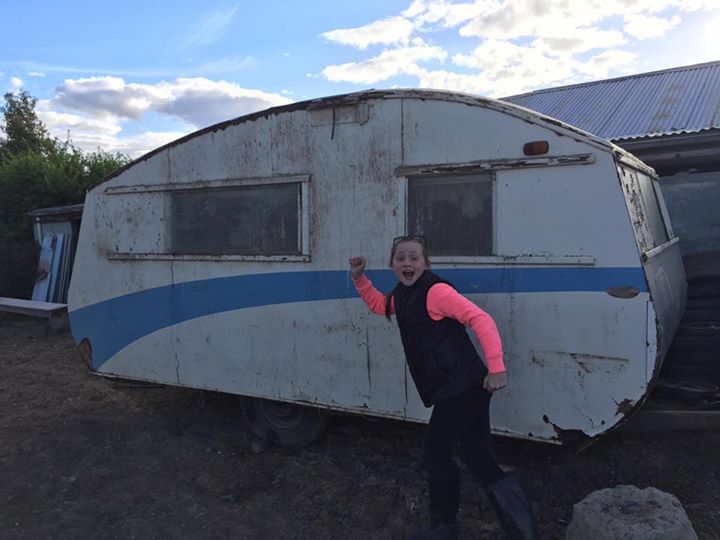 Lots of work to be done on her. |
|
|
|
Post by Roybeth on Dec 23, 2016 6:59:53 GMT 10
Here's another pic from the SA state library 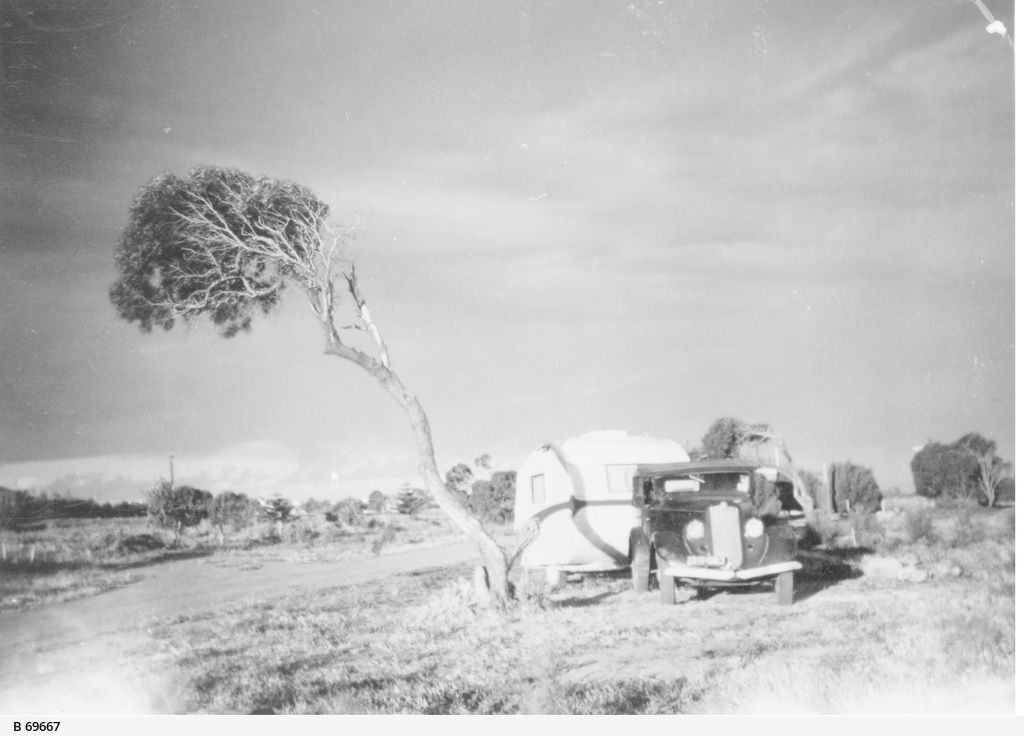 with caption "The Arthurson car (a 1934 Willys 77 tourer), with hired Furness caravan, parked beside one of two landmarks at the Whyalla Caravan Park (the other was the facilities block). The Arthursons stayed here during their honeymoon in the first week of November, 1954 " |
|
|
|
Post by furness on Dec 23, 2016 11:34:41 GMT 10
Hi RoyBeth
Where did you find your van?
|
|
|
|
Post by Roybeth on Dec 23, 2016 13:48:53 GMT 10
Hi RoyBeth Where did you find your van? Through Facebook - one of the vintage caravan groups |
|
|
|
Post by Don Ricardo on Dec 23, 2016 17:31:58 GMT 10
G'day Roybeth,
I saw that van discussed and then offered for sale on Facebook, so I'm pleased to know that it has ended up in your hands because you and your husband obviously appreciate the historical value of these older caravans (and being part of the forum, too).
In view of the discussion on this thread regarding Furness serial numbers, it will be interesting to hear what the serial number is for your new acquisition when you get a chance to find it. Hopefully once we've assembled a list of a few serial numbers we will be able to get a sense of when particular Furness vans were built.
Don Ricardo
|
|
|
|
Post by Don Ricardo on Dec 23, 2016 17:42:48 GMT 10
Hi all, Back in 2013, forum member Lollyvan provided us with some photos of a derelict 16 ft Furness van she had discovered at a tip in Far North Queensland. While sad to see, the photos are worth looking at because they show the way the coloured flash was painted on the Furness caravans, including the diamond shape on the front corners, and one of the colours used for the flash. Lollyvan also provided a photo of the serial number on the van. 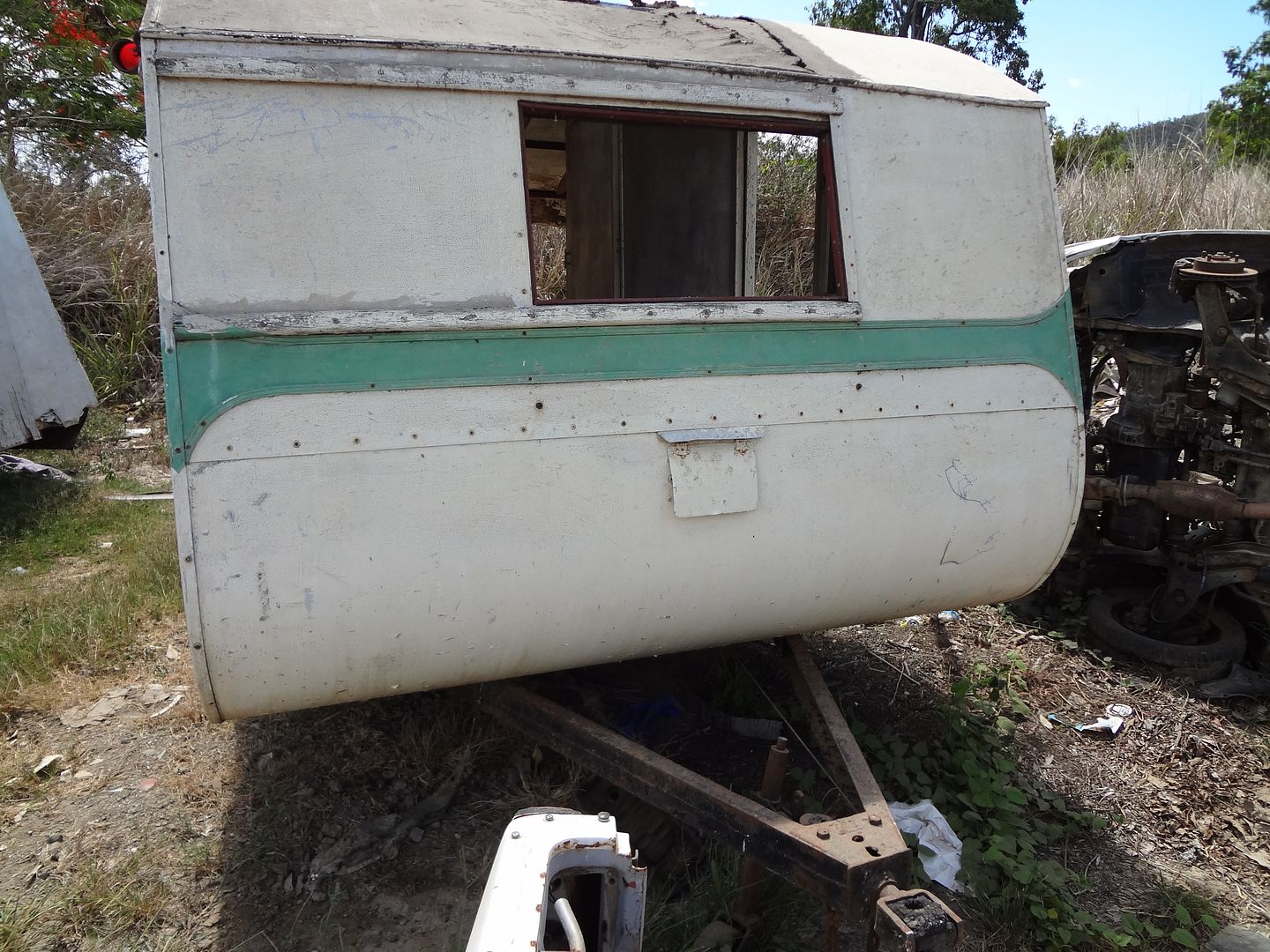 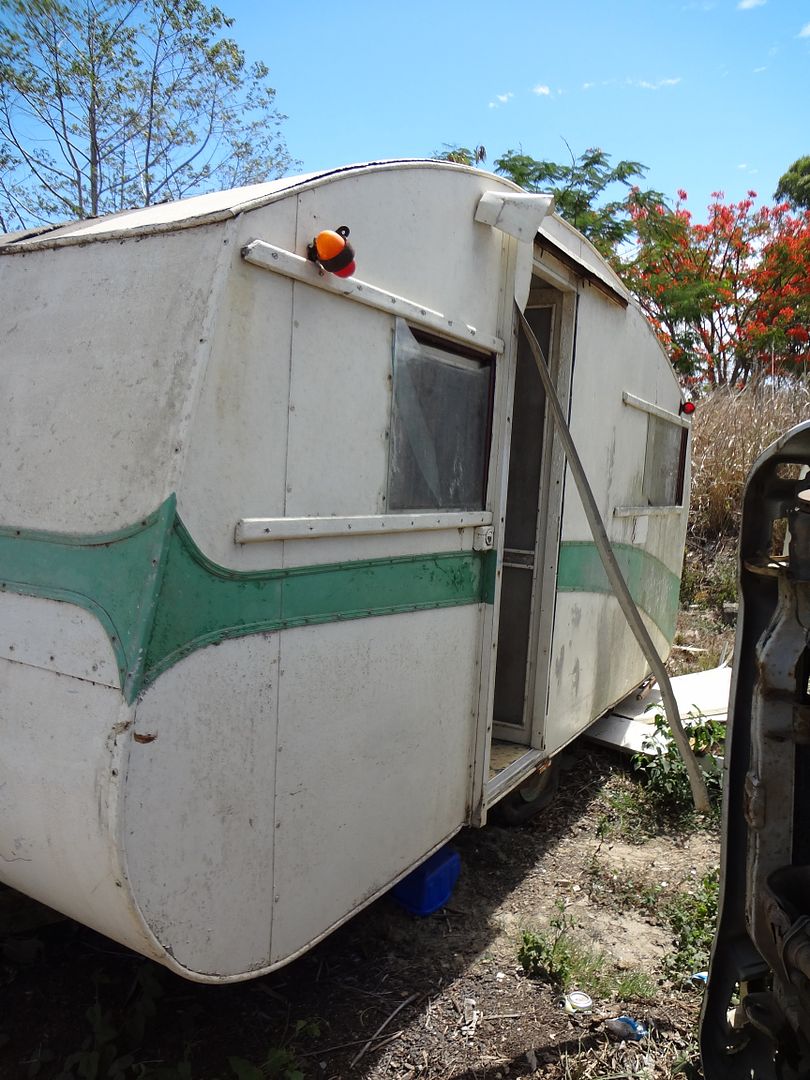 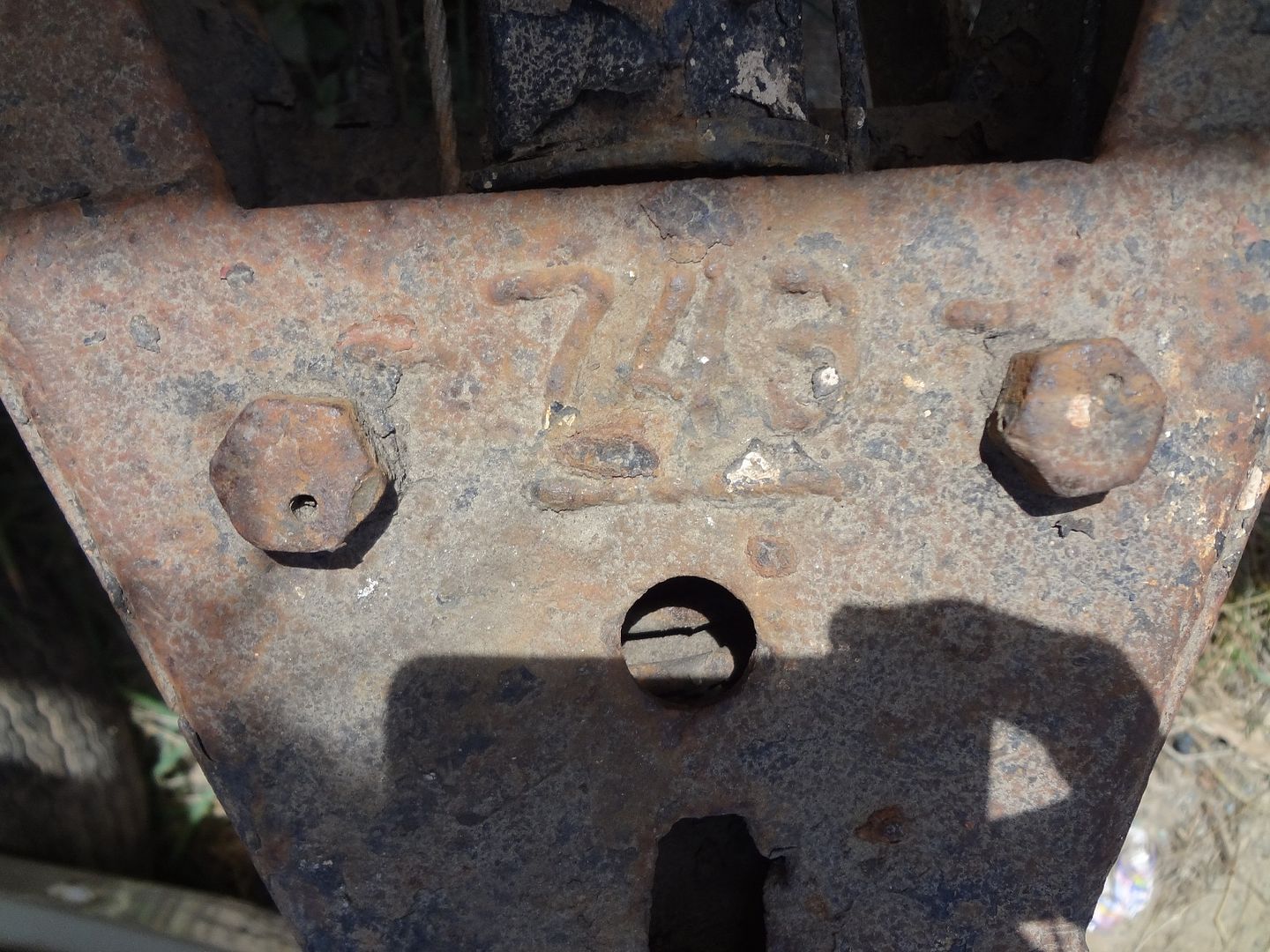 The number is a bit hard to read -certainly not as easy to read as the number of Furness's van above. However my reading is '243', although it could also be '743'. What do others think? There are more photos of this van here. Don Ricardo |
|
|
|
Post by brenten on Dec 24, 2016 1:45:28 GMT 10
hi don my furness,s chassis number is 3075 ....brenten
|
|
|
|
Post by furness on Dec 27, 2016 7:25:20 GMT 10
Hi Doin
Do you know where in FNQ the van was located? there may be some parts that can be salvaged by a friend of mine, if its still there of course.
|
|
|
|
Post by Don Ricardo on Dec 27, 2016 15:25:16 GMT 10
Hi all, Some items relating to the history of Furness caravans. A photo of a Furness caravan published in The Argus on Thursday, 20 May 1937 (page 16)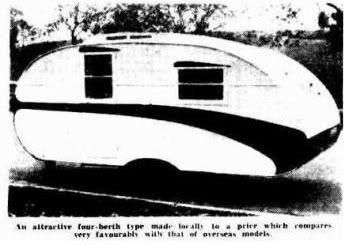 (Source: National Library of Australia nla.gov.au/nla.news-article11065650 ) The caption says: “An attractive four-berth type made locally to a price which compares very favourably with that of overseas models."This is the earliest photo we have of a Furness caravan, and is evidence that Furness was producing caravans as early as May 1937. For the full article from which this photo was extracted, see here. Photo of a Furness caravan published in the UK magazine The Caravan in January 1938, and posted by Cobber here in March 2011: The caption indicates that this caravan was owned by Fred Vary who was the first Australian member of the English Caravan Club, and that the photos was taken at 'a recent Australian rally'. Serendipitously enough, back in March 2010 forum member Bobt provided us with some photos taken at some early RACV Caravan Club rallies held in the 1930's. Amongst the photos was this one: 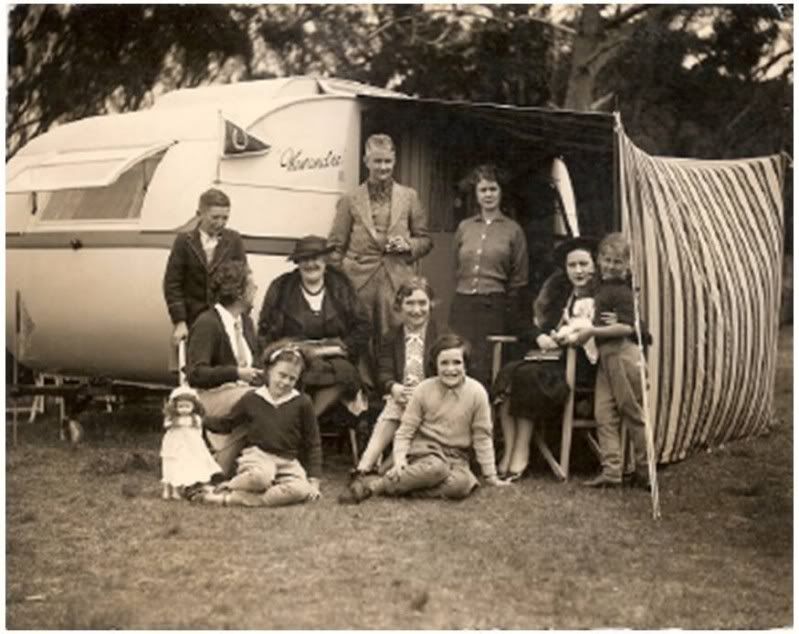 Although posing in different positions the people in the two photos are the same (even the children's toys), and the trees in the background are also the same, so we can be reasonably certain that the two photos of Mr Vary's Furness were taken at an RACV Caravan Club rally in Victoria on the same day prior to January 1938. The photos from RACV Caravan Club rallies provided by Bobt also included a couple of others of Mr Vary's Furness van, although perhaps not on the same occasion. One or two (or perhaps all) of the children in the photo below seem to be the same children in the photos above... 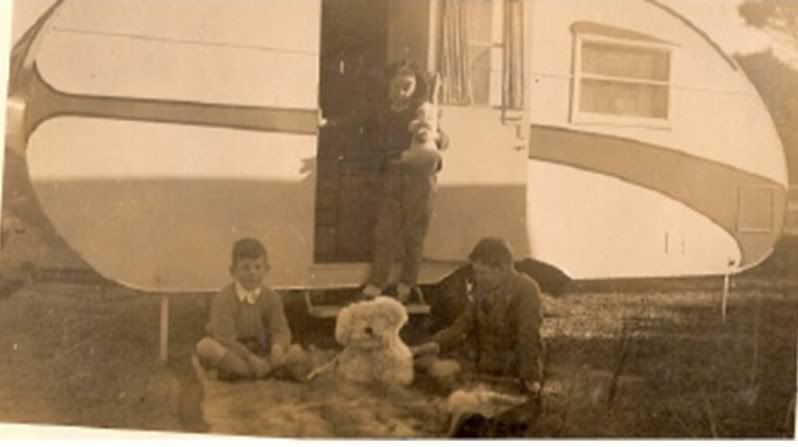 ...and Mr Vary can be seen standing (in what appears to be his typical pose!) to the right of the doorway of the Furness caravan shown on the left and behind the other caravan in this photo:  (The caravan in the foreground is a Land Cruiser.) More of Bobt's RACV Caravan Club photos can be seen here. Photo of a group of caravans at a South Australian caravan rally published in The Caravan in August 1940 (page 267), and posted by Cobber here in April 2011: Identification of the caravans shown in the photo, including at least two Furnesses: 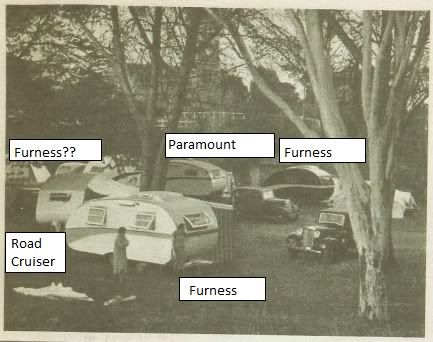 Article from the Adelaide News on Tuesday, 21 December 1943 (page 5), reporting on the cessation of Furness caravan production during World War II: Article from the Adelaide News on Tuesday, 21 December 1943 (page 5), reporting on the cessation of Furness caravan production during World War II: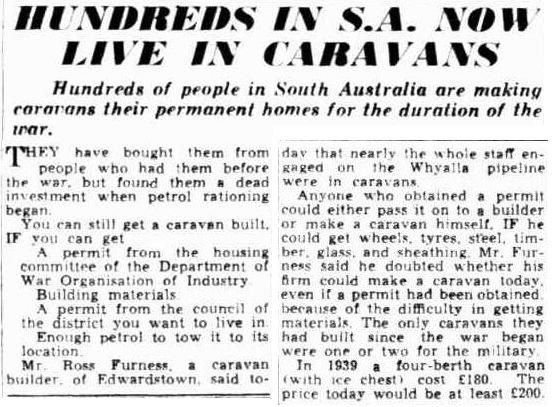 (Source: National Library of Australia nla.gov.au/nla.news-article128351270 ) Note the comment that the only caravans built by Furness after the commencement of the war were one or two for military use. Don Ricardo |
|
|
|
Post by Don Ricardo on Dec 27, 2016 15:46:37 GMT 10
Hi Doin Do you know where in FNQ the van was located? there may be some parts that can be salvaged by a friend of mine, if its still there of course. Hi Furness, The tip in question was at Kuranda, but the photos were taken in 2012, so I reckon the van would have disintegrated by now (either by the forces of nature or the force applied by a bulldozer or similar). Don Ricardo |
|
|
|
Post by furness on Dec 28, 2016 12:40:36 GMT 10
Sorry Don my computer did an auto correct and spelt your name incorrectly
I will ask my mate to drop past just in case, you just never know.
|
|
|
|
Post by Don Ricardo on Dec 28, 2016 21:31:43 GMT 10
Hi all,
A bit more on the Furness trail...
Trevor Gill's book on the history of the South Australian caravan industry, Still Swinging the Billy, contains a chapter on Furness caravans based on interviews with Anthony Furness, grandson of Ross, one of the Furness brothers who made the transition from producing pianos to caravans. The information throws some light on when Furness started and stopped caravan manufacture, and why:
Anthony Furness...said "The effects of the [Great] Depression and the arrival of the wireless simultaneously signalled the end of the piano business. Ross' youngest brother Glen weighed up the situation and idleness of the wood presses, saws, planing, sanding and routing machines that had been used to make the pianos. With all of the necessary equipment and the skills at hand, he decided to diversify Furness Limited into a business making caravans. Through a process of trial and error, the first Furness caravan was completed in 1935. It was a fifteen footer."
...However, the caravan business, came to a grinding halt with the outbreak of World War II. Instead of mobile holiday homes, the company turned its production line over to making munitions boxes for the war effort, and at one stage received an order for a batch of garrottes fitted with piano wire for military purposes.
Across Australia, a number of firms that had been making caravans before the war ceased production, most not to resume. Furness Limited was one that did return to caravan construction after the war, though it was a slow restart as the nation was shackled by petrol rationing and other necessary restraints....
The machinery that had made quality pianos and then exceptional caravans had served the company well. But the advent of aluminium caravans did not sit well with Keith Furness [Anthony's father], a man who was fiercely proud of the family's achievements in wood...
By 1956, Keith Furness, an astute businessman, saw an opportunity for big profits by turning his machinery from caravan construction to the manufacturing of doors. He secured big contracts to build doors for the South Australian Housing Trust and the Queen Elizabeth Hospital, among other clients, and the Furness caravan business closed down.
(Source: Trevor Gill, Still Swinging the Billy, CCSIASA, 2012, pages 38 & 40)
So this tells us that Furness began producing caravans in 1935 and ceased production in 1956 or soon after. 1956 is earlier than we understood Furness had stopped caravan manufacture, but explains why advertisements for their vans stopped appearing in the Winser caravan manuals and other publications around that time.
Don Ricartdo
|
|
|
|
Post by furness on Feb 17, 2017 21:49:58 GMT 10
Hi
There's been some great info on this thread. I've started pulling my new van to bits to start the restoration and I've a couple of questions. Can anyone help me with locating some of the red cloth/canvas tape for the external wall panel joints.
Thanks
|
|
|
|
Post by Don Ricardo on Jun 13, 2020 21:54:26 GMT 10
Hi all, Back in February 2014, Cobber posted the following item here from the South Australian Southern Argus of 3 June 1938:  The article reported on a South Australian Caravan Club event held in Strathalbyn. Unusually for the time, but very helpfully, the article included the names of the caravanners who attended, and the make of their caravans. Cobber noted that a number of the caravans listed were Ace vans, and that several of the Aces were owned by people called Furness. This led him to speculate whether there was a connection between Ace caravans and the Furness family who built Furness caravans. Turns out that Cobber's finely tuned sixth sense was operating perfectly, as always. The following advert for the Ace Auto Cabin was published in the Adelaide Advertiser on Tuesday, 22 December 1936 (page 2): 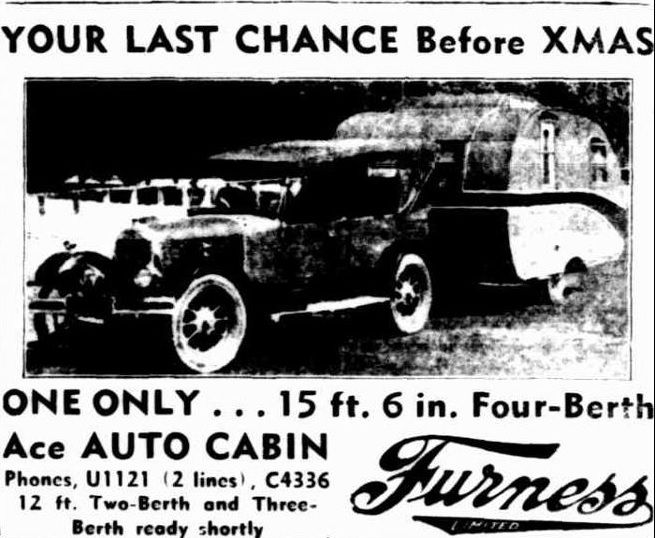 (Source: National Library of Australia nla.gov.au/nla.news-article47771773 ) The advert reveals that the Ace vans were built by Furness, and that Furness had entered into the caravan industry at least as early as 1936 (and according to the Furness family in a post above, 1935). The van in the advert is 15 ft 6 in long, and it is stated that 12 ft two-berth and three-berth vans would be "ready shortly", which possibly suggests that the Furness caravan enterprise had only begun fairly recently. Note also that Furness didn't just produce caravans - or trailer caravans in the parlance of the day - but 'Auto Cabins'. Much more upmarket! As 1937 rolled round, Furness placed some more adverts that show us a bit more about their 'auto cabins'. This advert was printed in the Adelaide Advertiser on Tuesday, 2 March 1937 (page 2) and shows an Ace side on 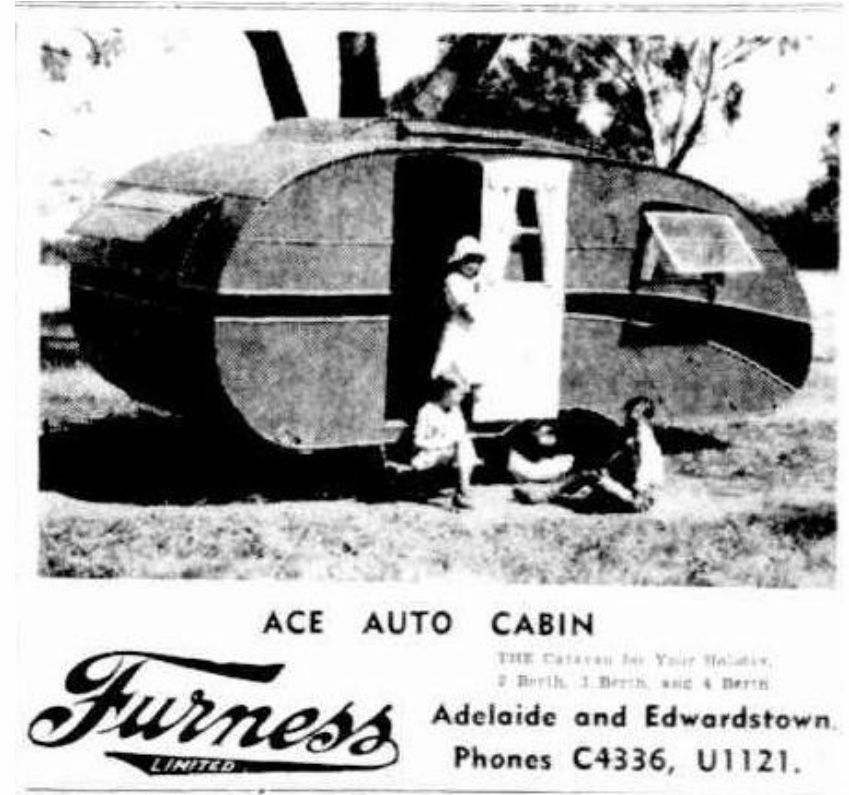 (Source: National Library of Australia nla.gov.au/nla.news-article41624771 ) And this advert published in the Advertiser on Tuesday, 26 January 1937 (page 24) shows the inside of an Ace: 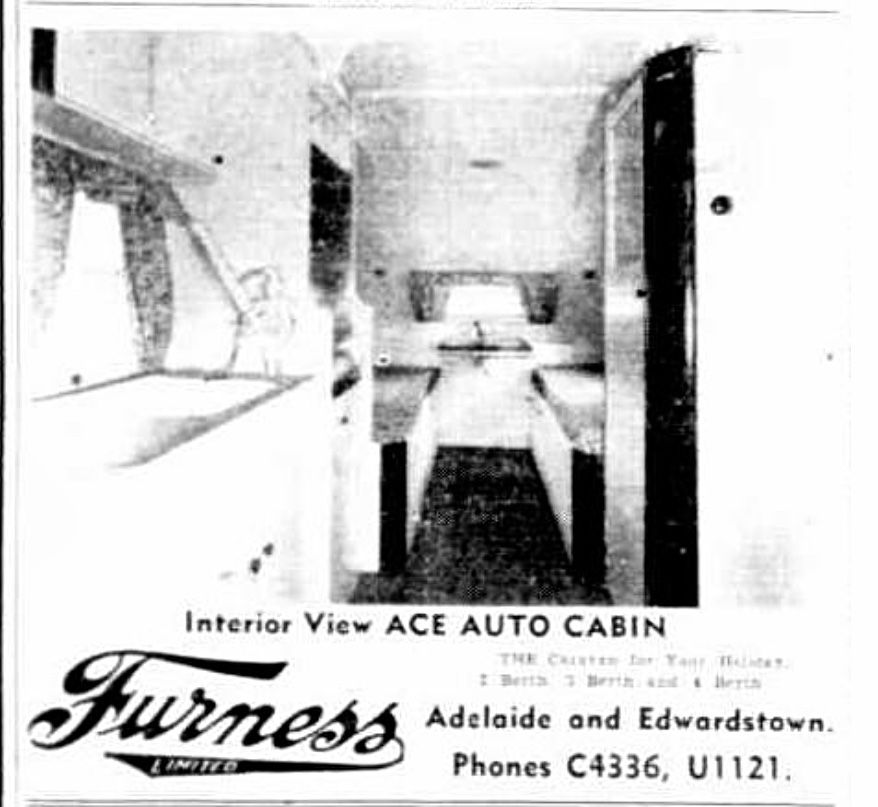 (Source: National Library of Australia nla.gov.au/nla.news-article47780098 ) Both adverts state that the Ace Auto Cabins are available as two, three or four berth, so perhaps the smaller 12 ft 6 in van was being built by then. Furness placed various line adverts for the Ace Auto Cabins through the rest of 1937. Some of the adverts later in the year referred to Ace Caravans rather than 'auto cabins', so perhaps the latter phrase hadn't really proved to be an effective selling point? However, 1938 brought a change in Furness's advertising and branding. This advert was printed in the Advertiser on Tuesday, 11 January 1938 (page 4): 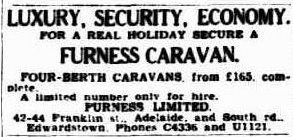 (Source: National Library of Australia nla.gov.au/nla.news-article36402628 ) Furness's vans were now branded as 'Furness Caravans', and continued to be branded that way until the company exited the caravan industry in the late 1950's. Based on the information above, I think we can now say that the following photo taken in 1938, and posted higher up this thread by Cobber, is most likely an Ace Auto Cabin rather than a Furness branded van. I am basing this on the dark colour of the van, the shape of the flash on the side, and the relatively early date: 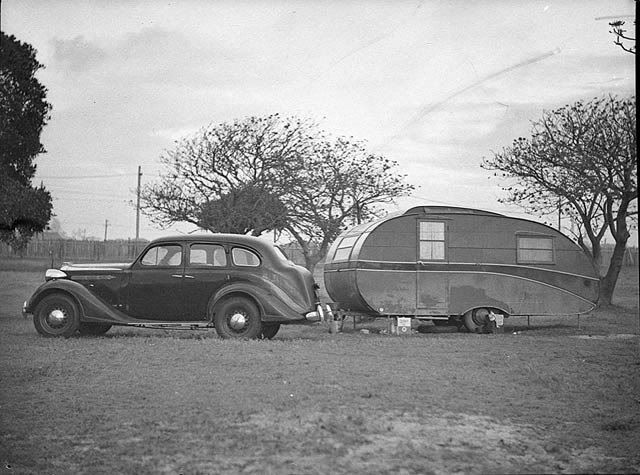 On the other hand the following photo, also from 1938, posted higher up this thread by Mark T clearly shows a Furness branded caravan. Note the diamond shaped decoration added to the flash on the front corners of the van which continued as a part of Furness caravan livery for several decades: 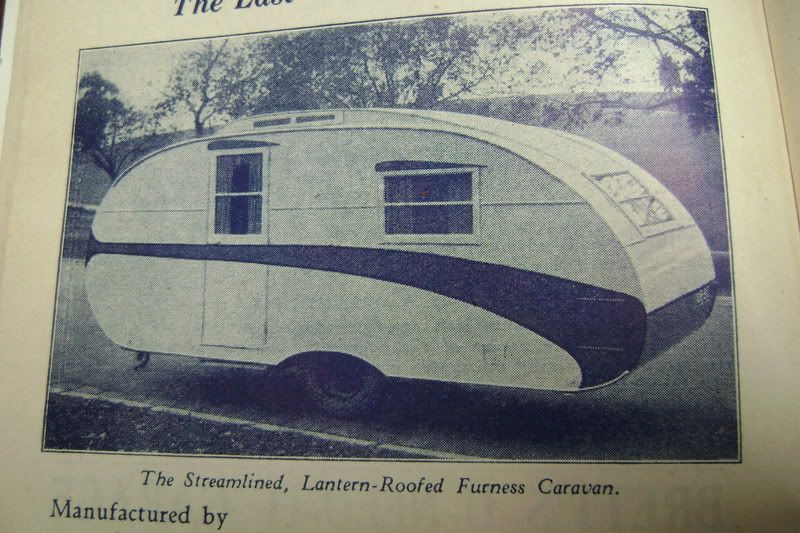
We gain further information about the background to the Furness family's business from this article reporting on the death of the 'family patriarch' Herbert Furness, published in the Advertiser on Monday, 31 December 1934 (page 10): 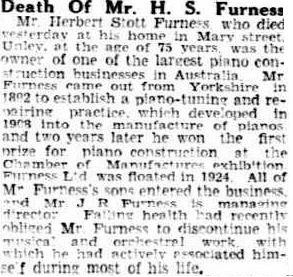 (Source: National Library of Australia nla.gov.au/nla.news-article35029013 ) Herbert Furness arrived in Adelaide from Yorkshire in 1892 and set up as a piano tuning and repair business. In 1908 this became a piano manufacturing business. The Adelaide papers reported at various stages of the Furnesses adding cabinet making, ply manufacture and veneering businesses to the piano business. There are quite a few mentions in the press of Furness Ltd winning awards at the Adelaide show and other competitions for their pianos and veneers on furniture. One of the Furness sons regularly toured rural South Australia tuning local pianos, with similar reports to this one in the Bordertown Border Chronicle of Friday, 1 March 1935 (page 2): 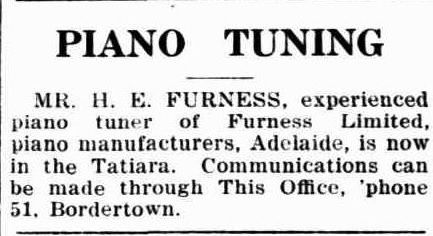 (Source: National Library of Australia nla.gov.au/nla.news-article212885509 ) There are also a couple of reports in 1935 and 1937 of fires in the Furness ply factory in Adelaide. However, with cabinet making expertise and a ply factory to hand, it is perhaps not surprising that the Furnesses decided to start building caravans. And clearly the family got the caravan bug in a big way. The article about the Strathalbyn caravan rally in 1938 at the beginning of this post tells us that two of the Furnesses were present with their Ace vans, and this article published in the Adelaide News on Friday, 18 November 1938 (page 6) tells us that one of the Furness families set up camp with their caravan at Belair as their family home for a number of months in that year. No doubt the caravan was a Furness. Note also that Mrs A G Furness, who is quoted in the article, was a Committee member of the South Australian Caravan Club and was involved in organising the Club's caravan rallies:  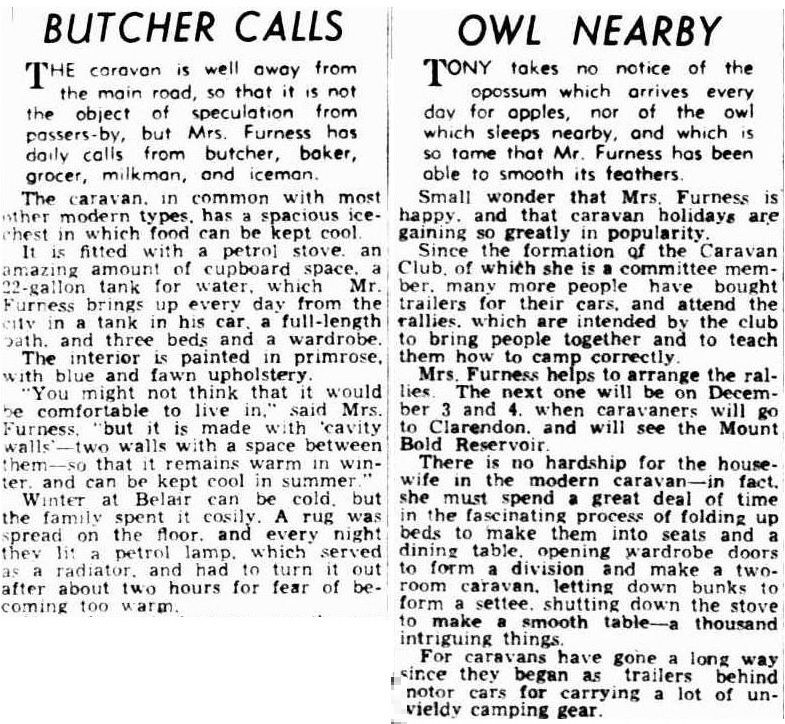 (Source: National Library of Australia nla.gov.au/nla.news-article131919374 Text rearranged to improve readability.) A final little snippet of information about Furness caravans is provided in this advert for the 'Weber, Shorthose and Rice's Health and Strength College' placed in the Adelaide Mail on Saturday, 13 February 1937 (page 22):  (Source: National Library of Australia nla.gov.au/nla.news-article55839069 ) The advert shows Mr Reg Shorthose standing beside his Ace Auto Cabin, which looks to be one of the smaller 12 ft 6 in versions. Reg Shorthose was one of the other people who attended the Strathalbyn caravan rally in his Ace in 1937. But more than that, Reg Shorthose was also reported in the Adelaide Press in 1932 as having purchased a Willshire Paramount caravan. So it appears that he may have switched camps from Paramount to Furness. But that's a story for another day! Don Ricardo |
|
willow5075
Full Member
   Willow & the MOTH
Willow & the MOTH
Posts: 355
|
Post by willow5075 on Nov 10, 2020 19:52:47 GMT 10
On the weekend, I stopped in at a Vintage Market and whilst I was browsing some vintage sewing patterns, I got chatting to the lady who was the stall holder. Told her I had vintage caravans and she told me how her father worked for Furness building out the caravans, mostly interiors I think because he was a cabinet maker. His name was Colin Fredericks (I'm pretty sure that's what she said). They didn't have a car so never had a Furness of their own but the vans used to be parked in the driveway while her Dad worked on the so she and her siblings had fun playing in them whilst they were there. Her Dad also did Art Deco fit outs in places like the Renmark Hotel. Sadly, I think that has been made over in the decades since.
|
|
|
|
Post by Don Ricardo on Apr 3, 2023 11:00:31 GMT 10
Hi all, Here's an interesting little item from the Adelaide News on Tuesday, 21 December 1943 (page 5) discussing the impact of World War II on the caravan industry. It references Ross Furness 'caravan manufacturer of Edwardstown': _Tues_21Dec1943_p5_article128351270.png) (Source: National Library of Australia nla.gov.au/nla.news-article128351270 )
The article states that Furness only built one or two caravans for the military after the War commenced, but also indicates how important caravans were for housing during (and after) the War.
Don Ricardo |
|
|
|
Post by Mustang on Apr 4, 2023 5:48:10 GMT 10
Re the above post:
Having just towed from Geelong to Caloundra (Qld) up the coastal highways, I can't get my head around "petrol rationing" So many vehicles these days.
|
|